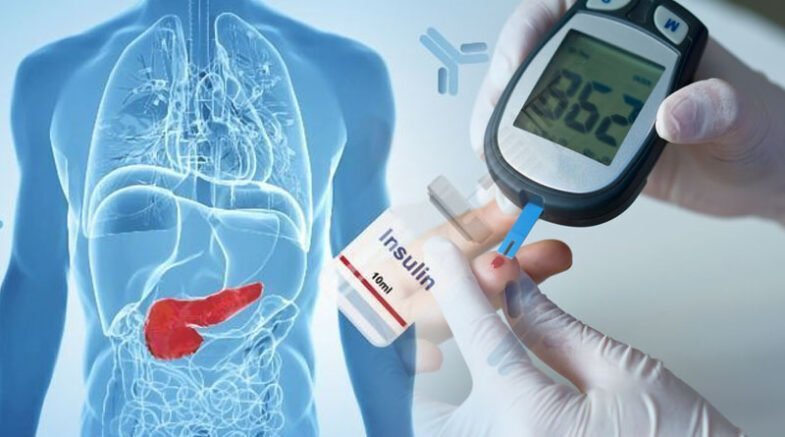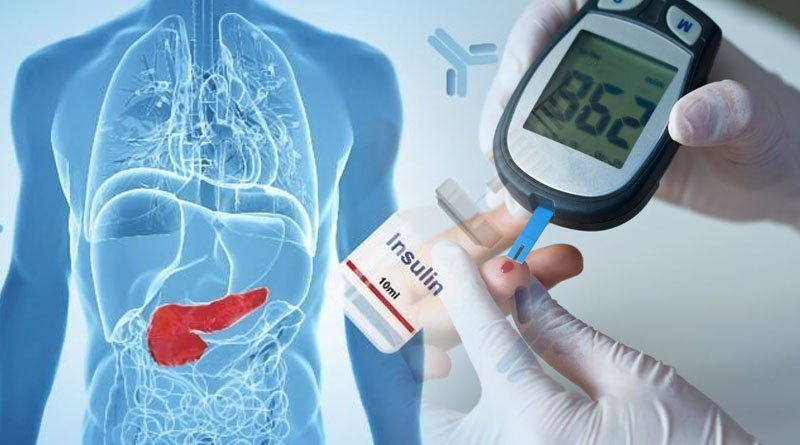Diabetes is a global public health issue that is common because of ageing, physical inactivity, obesity, sedentary lifestyles, and bad eating habits.

Diabetes mellitus is a group of metabolic disorders with a high glucose range. Diabetes is divided into two major groups: insulin-resistant type II diabetes (T2D) and insulin-deficient type I diabetes (TID). A disturbance in glucose and lipid homeostasis leads to diabetes. In this article, we will discuss the treatment and management of diabetes mellitus.
Diabetes can occur due to a number of factors that include the absence or decreased levels of insulin, impaired insulin functioning, inhibition of glucose absorption, upregulation of glucose transporters, increased uptake of glucose, an increase in the release of adiponectin, PPAR activation, glycogen metabolism, and increased levels of D-Chloroinositol. Diabetes is one of the fastest-growing public health problems, with several tragic health consequences.
Diabetes is a global public health issue that is common because of ageing, physical inactivity, obesity, sedentary lifestyles, and bad eating habits. Diabetes is becoming a more serious problem, owing to a variety of factors that include environmental and emotional changes.
About 537 million individuals (20–79 years old) are victimized, and one out of every ten people is diabetic. By 2030, this number is projected to rise to 643m, and by 2045, to 783m. In 2022, diabetes will be responsible for 6.7 million fatalities, or one every five seconds.
According to the National Diabetes Survey of Pakistan (NDSP) 2016–2017, diabetics account for 26.3% of Pakistanis. Diabetes affects about 27.4 million people in a country with a population of 207.77 million. In addition, 14.47 percent of people have pre-diabetes.
These beta cells secrete a hormone known as insulin. Insulin is a protein in nature that is synthesised there and secreted in feedback to various stimuli, for example, arginine, sulfonylurea, and blood glucose level, but among them, the blood glucose level is the main factor.
Diabetes mellitus is seen when these pancreatic cells are unable to perform their activities effectively and are not able to sustain insulin levels to prevent hyperglycemia. It may happen from a variety of factors, including both genetic and environmental factors.
Hyperglycemia is the most common clinical symptom of diabetes and the main cause of chronic disease complications. This is affected by two main mechanisms: the first is caused by autoimmune dysfunction and the destruction of pancreatic beta cells (type 1 DM), and the second is caused by an overstimulation of insulin synthesis and secretion in the presence of insulin resistance (IR), which is mostly associated with overweight or obesity (type 2 DM).
Types of Diabetes Mellitus:
WHO released the first and most accepted classification of diabetes, which was later modified in 1985. The expert committee from 1980 defined two main types of diabetes and named them Type 1 and Type 2, or insulin-dependent diabetes mellitus and non-insulin-dependent diabetes mellitus, respectively. But in 1985, the terms Type 1 and Type 2 were omitted, but the names IDDM and NIDDM were retained.
Type 1 DM:
Type 1 diabetes accounts for 10% of all diabetes cases. It is an immune-mediated or immune-associated destruction of pancreatic beta cells. Due to the destruction of pancreatic beta cells, there is a deficiency of insulin in the body, which results in hyperglycemia.
The onset of the disease usually occurs during childhood, but the symptoms can develop later on. Type 1 diabetes mellitus accounts for about 10% of the total cases of diabetes mellitus. It is further divided into two types, depending on the cause.
Type 1A accounts for about 70 to 80% of cases and is due to the autoimmune destruction of pancreatic beta cells, while type 1B is due to unknown causes. Type1diabetes is characterized by the presence of inflammatory infiltrate in the islets of pancreas. HLA and MHC genes are found to be associated with the susceptibility of the disease.
The cell-specific antibodies are present in the islet, and there are alterations seen in the CD4+ compartment of T cells.
Genetic susceptibility results in an ineffective immune barrier and immune response. This results in the start of an autoimmune response that activates T lymphocytes and macrophages.
The T lymphocytes then activate the CD4 receptor, which then activates INF gamma, causing the destruction of beta cells. On the other hand, macrophages (the antigen-presenting cells) activate TNF alpha and interleukin 1, which also cause beta cell destruction. If more than 90% of beta cells are destroyed, it results in type 1 diabetes mellitus.
Type 2 DM
Type 2 diabetes accounts for 90% of cases of diabetes mellitus. Insulin deficiency due to beta-cell dysfunction in the tissues results in insulin resistance and type 2 diabetes.
Obesity, a sedentary lifestyle, and an ageing population increase the risk of type 2 diabetes. Cardiovascular problems are often associated with type 2 diabetes, and they are the major cause of morbidity in patients with the disease. As a result, it is critical to maintain healthy lipid and blood pressure levels while also monitoring blood glucose levels.
In type 2 diabetes, there is no need to prevent ketoacidosis with insulin, as it is not an autoimmune disorder. The genes responsible for type 2 diabetes are not identified; it may be due to the heterogeneity of the genes. Under normal conditions, the blood glucose levels are kept within a narrow range, despite changes in supply and demand, by insulin secretion and the insulin sensitivity of the tissues.
In type 2 diabetes, these mechanisms fail, resulting in lower insulin levels due to beta-cell dysfunction and impaired insulin function due to insulin resistance in the tissues. GDM (gestational diabetes mellitus) is a category of diabetes seen particularly in pregnant women, detected in the 2nd or 3rd month period. It does not become clearly obvious that a woman has diabetes before gestation.
Some other types of diabetes are also seen because of some other reasons, such as MODY (maturity-onset diabetes in the young), neonatal diabetes, monogenic diabetes disorder, cystic fibrosis (exocrine pancreatic disease), and chemically induced diabetes (with steroid use, seen after organ transplant, due to drugs used in HIV/AIDS therapy).
Treatment and Management of Diabetes:
The treatment and management of diabetes mellitus include lifestyle changes (dietary modifications and physical exercise) and the use of drugs. Such as sulfonylureas, biguanides, glinides, alpha-glucosidase inhibitors, meglitinides, thiazolidines, incretin mimetics, dipeptidyl peptidase-IV inhibitors, and insulin as monotherapy or in combination.
Insulin, when used in the treatment of diabetes mellitus when there is a deficiency of insulin, can enhance plasma insulin levels and overpower insulin insensitivity. A difficult situation arises in the treatment of non-insulin-dependent diabetes mellitus in which blood glucose levels do not come to the required levels despite treatment with diet and oral hypoglycemic agents. And the patients cannot be treated by giving insulin shots at fair doses.
To treat NIDDM, oral hypoglycemic agents such as metformin, phenformin, and biguanides were first established in 1957.
Metformin is widely used for treatment alone as well as in combination with sulfonylureas. Pharmacokinetics revealed that metformin is rapidly released from the body as it does not bind with plasmin proteins.
The major drawbacks in the treatment of diabetes are the adverse effects of the drugs, the development of resistance, and the inability to control the complications of the disease. Another disadvantage of using currently available synthetic drugs such as sulfonylureas or biguanides is that, despite serious side effects, these drugs must be administered for the rest of one’s life.
Herbal medicine for the cure/treatment of diabetes mellitus:
The use of herbal medicine for the treatment of diabetes mellitus is the oldest form of treatment. Some medicines that were derived from plants have been used throughout the world.
For the development of civilization, this has been one of the major reasons. Most of the present medications have been obtained from herbal plants. WHO indicated that 80% of the population is dependent on herbal medicines for their primary medicinal requirements.
Given that many present synthetic medications are unable to slow the progression of diabetes, herbal therapies have proven to be a beneficial alternative therapy.
It is estimated that there are 30,000 to 75,000 herbal plants in the world, and they are used to target infectious and life-threatening diseases.
The discovery of insulin and oral antidiabetic agents diverted public attention, but due to several adverse effects like persistent hypoglycemia, obesity, and many others, treatment of diabetes is still a challenge.
Because of the increased risk of side effects from using synthetic drugs, people are encouraged to use alternative therapies with effective treatment and fewer side effects. Many herbal extracts that were administered orally were found to have strong antidiabetic activity and lowered blood sugar levels in people with induced diabetes.
More than 800 plants are thought to have hypoglycemic activity, and the majority of their active constituents, such as glycosides, alkaloids, and many others, have glucose-lowering activity.
This article is jointly authored by Wafa Majeed from the Department of Pharmacy, University of Agriculture, Faisalabad and Muhammad Saad Tariq from Institute of Physiology and Pharmacology, University of Agriculture.
